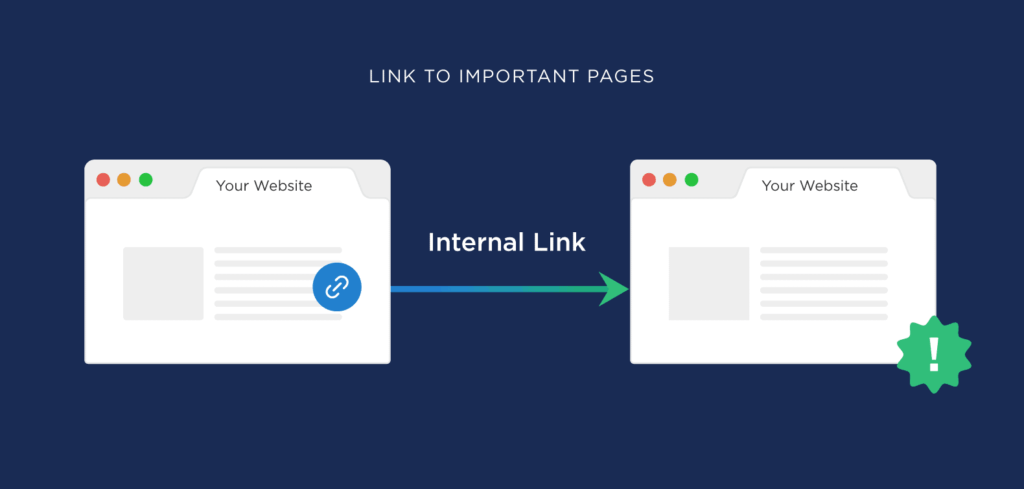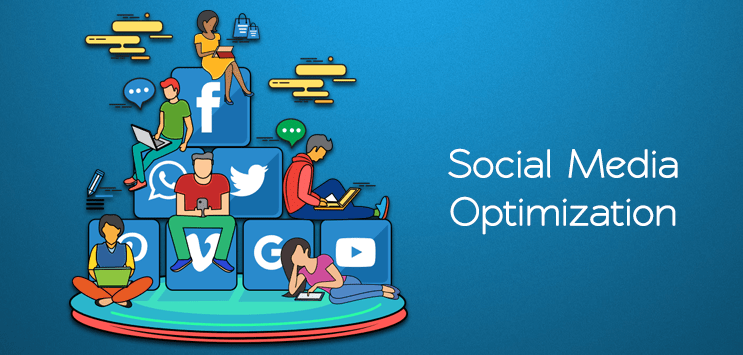Optimizing your social media content has many great benefits. This process is great for increasing your reader engagement and enhancing your SEO rankings. Is social media optimization really that important? Have you ever dreamed of being on the first page of a Google search list? Optimizing your social media content can help you get there. These 7 simple steps can boost your content and potentially bring you added traffic and buying customers.

1. Use Creative Title Tags
A title tag for a blog post is an HTML element that specifies the title of the webpage. It appears as the clickable headline in search engine results and is important for both search engine optimization (SEO) and the user experience. A well-crafted title tag should be concise, relevant to the content, and include keywords that accurately describe the blog post. It should also be compelling enough to entice users to click on the link and visit the webpage. When creating a title tag for your article or blog post, be sure to consider the following items:
- Use engaging headlines
- Use long-tail article tags
- Answer user questions
- Use around 40 characters and include numbers
2. Optimize Your Keywords
Use keyword planners to optimize your social media content for search engines. By utilizing these valuable tools, you can discover popular keywords and phrases related to your topic. With this information, you can strategically incorporate these keywords into your content, increasing its visibility and attracting more organic traffic to your website or blog.
Implementing an effective keyword strategy can greatly improve your search engine rankings, ultimately leading to increased exposure and potential conversions for your online presence. When using your keyword planner be sure to use long-tail keywords. A longtail keyword is a specific and highly targeted search phrase that typically includes three or more words. Unlike generic keywords, longtail keywords are more specific and often have less competition.
Longtail keywords are used to target a niche audience and are valuable for driving relevant organic traffic to a website. Using longtail keywords in content can help improve search engine rankings and increase the chances of attracting qualified visitors to a website. Additionally, make sure that your social media content has an average to high word count. The word count for your content should be anywhere between 920- 1400 words in total. This will increase the chances of your content being seen and read.

3. Meta Descriptions
Creating quality meta descriptions for your web pages and social media content offers several benefits. These benefits include the following:
1. Improved Click-Through Rates (CTR):
A well-crafted meta description that accurately summarizes the content of your page can entice users to click on your website in search engine results. A compelling meta-description can set expectations and increase the likelihood of attracting relevant traffic.
2. Enhanced Search Engine Visibility:
Search engines like Google often display the meta description in search results, giving users a glimpse of what your page is about. A compelling and relevant meta description can make your website stand out among the competition, improving your chances of being clicked on.
3. Leveraging Keywords:
Relevant keywords in your meta description can help search engines understand the content of your page and rank it appropriately. It can also improve your website’s visibility for specific search queries, increasing organic traffic. Good keywords are among some of the best tools to use in social media marketing.
4. Improved User Experience:
A concise and informative meta description can help users quickly determine if your page or social media content matches their search intent. This can lead to a better user experience, as visitors are more likely to find the information they are seeking.
5. Increased Brand Awareness:
Consistently creating quality meta descriptions that align with your brand’s messaging and values can help strengthen your brand presence. A well-crafted meta description can reinforce your brand voice and attract users who resonate with your brand’s identity.
Remember, meta descriptions are limited, typically around 150–160 characters. So, make sure to be concise, engaging, and accurate in describing the content of your page.

4. Use Headers
Headers are used for organizing and structuring the content in a document or webpage. They serve as titles or headings for different sections, making it easier for readers to navigate and find specific information. Aside from the visual aspect, headers also provide important cues to search engines, helping them understand the hierarchy and topic relevance of the content.
Headers also help divide your content into sections, which makes your text more readable to viewers. When creating your social media content use at least 3-5 headings and subheadings. If you are creating a post for social media applications be sure to include a caption or hashtag if applicable.
5. Be Mindful Of Your Content Quality
Creating quality social media content offers several benefits. These days social media plays a crucial role in connecting people, businesses, and communities. With the right approach, social media platforms provide an excellent opportunity to engage with your target audience, build brand awareness, and enhance customer loyalty. By focusing on creating high-quality content, you can effectively establish your brand as an authority in your industry. Thought-provoking and informative posts not only attract the attention of your followers but also drive organic reach and engagement.
This, in turn, helps to increase your online visibility and boost your brand’s reputation. In addition to enhancing your brand’s credibility, quality social media content allows you to build meaningful relationships with your audience. By providing valuable insights, answering questions, and addressing concerns, you can cultivate a loyal community that trusts and values your expertise. Furthermore, engaging content on social media can drive traffic to your website or online store.

By incorporating compelling call-to-actions and shareable content, you can encourage your followers to take action, such as visiting your website, making a purchase, or subscribing to your newsletter. Overall, investing time and effort in creating quality social media content is a worthwhile endeavor. It allows you to establish your brand’s identity, foster strong relationships with your audience, and ultimately drive growth for your business.
Keep crafting compelling social media content that resonates with your target audience and maximizes the potential of social media platforms. Listed below are a few other benefits of creating quality social media content.
- Increased Audience Engagement: Quality social media content tends to be more interesting, valuable, and relevant to your target audience. This, in turn, increases engagement with your posts, such as likes, comments, and shares. Engaged audiences are more likely to become loyal followers, helping you build a strong online community.
- Enhanced Brand Reputation: High-quality content showcases your expertise, professionalism, and commitment to providing value. When your audience consistently finds valuable content from you, it builds trust and credibility for your brand. This positive reputation can attract more followers and potential customers.
- Improved Organic Reach: Search engines and social media algorithms prioritize quality content. When you consistently produce valuable content, algorithms often reward you with increased visibility, resulting in better organic reach. This means your posts are more likely to appear in search results and reach a wider audience without relying solely on paid advertising.
- Opportunity for Virality: Quality content has the potential to go viral, spreading rapidly across social media platforms. Viral content can significantly increase your brand’s exposure, attracting many new followers and creating brand awareness.
- Increased Conversion Rates: Valuable and engaging content establishes you as an authority in your niche, helping to convert your audience into customers. By consistently providing value and addressing their pain points, you can nurture leads and guide them through the customer journey.
Remember, quality content is not just about aesthetics, but also about providing value, being authentic, and understanding your audience. By creating and sharing exceptional content, you can reap the benefits of a thriving social media presence.

6. Add Visual Social Media Content
The visual social media content you use plays a vital role in attracting and engaging audiences. Here are some of the best types of visual content you can utilize for your social media channels:
- Infographics: Infographics are powerful visual representations of complex information. They are highly shareable and can effectively communicate data, statistics, or step-by-step processes in a visually appealing manner.
- Images: Images are one of the most commonly used visual content types across social media platforms. They can convey emotions, showcase products or services, and enhance storytelling. Make sure to use high-quality and eye-catching images to grab your audience’s attention.
- Videos: Videos have become extremely popular in recent years. They have a higher engagement rate compared to other content types. You can create informative, entertaining, or instructional videos to captivate your audience and increase social media reach.
- Memes: Memes are humorous images or videos accompanied by witty captions. They are highly shareable and can help showcase your brand’s personality, resonate with your audience, and provoke a sense of relatability.
- User-generated content (UGC): UGC is content created by your audience that promotes your brand or product. It can be in the form of images, videos, testimonials, or reviews. Sharing UGC builds trust, encourages engagement, and shows appreciation to your loyal customers.
- Interactive content: Interactive visual content, such as polls, quizzes, or interactive graphics, encourages audience participation. It creates a sense of engagement and can lead to valuable feedback and increased social media interactions.
Remember, creating visual content that aligns with your brand’s voice, target audience, and marketing goals is important. Experiment with different types of visual content to see which works best for your specific social media channels.

7. Use Internal Links
Internal links are hyperlinks that connect different pages or posts within the same website. They are commonly used to improve website navigation and the user experience. These links help users discover related or relevant content on your website, allowing them to easily navigate between different pages or sections.
Internal links also play a crucial role in search engine optimization (SEO). When search engines crawl your website, they follow these internal links to discover and index new pages. This helps search engines understand the structure and content of your website, which can potentially improve your website’s visibility in search engine results.
By strategically placing internal links throughout your website, you can guide visitors to important pages, promote content, and enhance the overall user journey. It’s important to ensure that internal links are descriptive and relevant, making it easier for both users and search engines to understand the context and purpose of each link.
In conclusion, internal links are a valuable tool for website owners and content creators, benefiting both the user experience and SEO efforts. They provide a means for seamless navigation and exploration within a website, promoting engagement and improving the overall visibility of the content. When creating internal links, be sure to use at least 7 internal links and 2 external links within the body of your content.

3 thoughts on “Optimize Your Social Media Content In 7 Easy Steps”